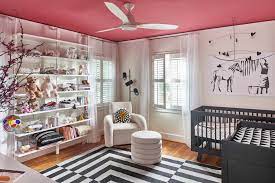I. Introduction
Choosing the right paint colors is a crucial aspect of interior design, as it sets the tone and atmosphere of a space. The plethora of color options can be overwhelming, making the selection process challenging. In this guide, we’ll explore tips and considerations to help you navigate the journey of selecting the best paint colors for your space, ensuring a harmonious and visually pleasing result.
II. Understanding Color Psychology
a. Warm vs. Cool Colors
- Warm Colors: Shades like reds, oranges, and yellows create a cozy and inviting atmosphere.
- Cool Colors: Blues, greens, and purples evoke a sense of calm and tranquility.
b. Neutral Colors
- Versatility: Neutrals like whites, grays, and beiges serve as versatile backdrops, allowing other elements in the room to stand out.
- Timelessness: Neutrals provide a timeless and enduring aesthetic, suitable for various design styles.
III. Considering Room Size and Lighting
a. Small Rooms
- Lighter Tones: Opt for light colors to create an illusion of spaciousness.
- Accent Wall: Consider an accent wall in a slightly darker shade for depth without overwhelming the space.
b. Large Rooms
- Bold Choices: Larger rooms can accommodate bolder and darker colors without feeling cramped.
- Feature Walls: Experiment with feature walls in contrasting hues to add visual interest.
c. Natural Light vs. Artificial Light
- Natural Light: Consider how natural light affects color throughout the day, as it can alter the perceived shade.
- Artificial Light: Be mindful of artificial lighting, as warm or cool bulbs can influence how colors appear.
IV. Coordinating with Existing Elements
a. Furniture and Fabrics
- Complementary Colors: Choose paint colors that complement the tones of existing furniture and fabrics.
- Contrast: Experiment with contrasting colors to make key elements stand out.
b. Architectural Features
- Highlighting Features: Use paint to highlight architectural details like trim, molding, or built-in features.
- Blending In: For a cohesive look, choose colors that seamlessly blend with architectural elements.
V. Testing Paint Samples
a. Paint Samples on Walls
- Small Areas: Paint small sections of the walls with your chosen samples to observe how they look in different lighting conditions.
- Live with It: Live with the samples for a few days to see how your perception of the color evolves.
b. Consider Finish Options
- Matte Finish: Offers a smooth, non-reflective surface suitable for hiding imperfections.
- Satin Finish: Provides a subtle sheen, easy to clean, and suitable for high-traffic areas.
- Gloss Finish: Reflects light, durable, and ideal for highlighting architectural details.
VI. Trend vs. Timeless Choices
a. Trendy Colors
- Accent Pieces: Use trendy colors for accent pieces or smaller areas to easily update the look.
- Temporary Appeal: Be cautious with trendy colors for large, permanent surfaces, as trends can change quickly.
b. Timeless Neutrals
- Longevity: Neutrals offer timeless appeal that can withstand changing design trends.
- Adaptable: They provide a neutral backdrop for incorporating various decor styles over time.
VII. Conclusion
In conclusion, selecting the best paint colors for your space involves a thoughtful consideration of color psychology, room size, lighting, existing elements, and personal preferences. By understanding these factors and testing paint samples, you can make informed decisions that result in a cohesive and visually pleasing interior. Whether you opt for warm, cool, or neutral tones, the right paint color can transform your space into a harmonious and inviting haven.
FAQs
- Q: How can I make a small room feel larger with paint colors?
- A: Opt for light, airy colors, and consider using mirrors to create the illusion of more space.
- Q: Can I use bold colors in a small space?
- A: Yes, but consider using bold colors as accents or on a single wall to avoid overwhelming the space.
- Q: Should I follow color trends for my entire home?
- A: While trends can be inspiring, consider timeless neutrals for larger, permanent areas and use trendy colors for accents or smaller spaces.
- Q: How do I choose a color that complements my furniture?
- A: Take inspiration from the dominant colors in your furniture and choose paint colors that either complement or contrast harmoniously.
- Q: Is it necessary to hire a professional color consultant?
- A: While not necessary, a color consultant can provide valuable insights and help you navigate choices, especially if you’re uncertain about your preferences or the overall design direction.
